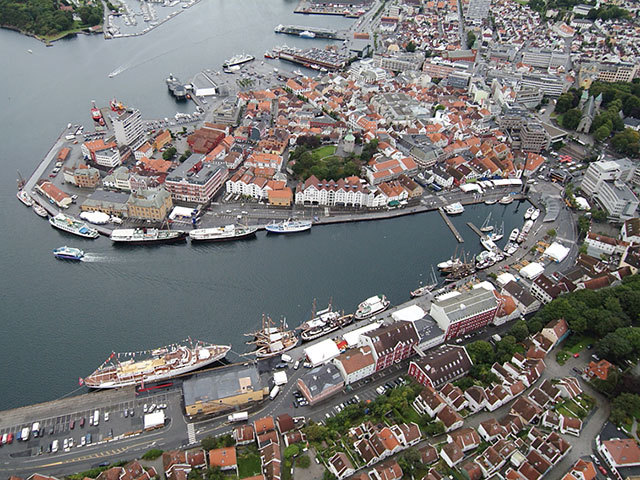
Norway will remain a bulwark against global stock declines as its sovereign wealth fund, the world’s biggest, proves to be an odd-ball among oil-built investment vehicles.
“There’s been a lot of writing about oil-based sovereign wealth funds selling assets. Well, as a matter of fact, we have actually been net buying assets this year,” Yngve Slyngstad, CEO of the $830 billion fund, said in an interview in Oslo.
And the buying probably won’t stop soon.
Unlike wealth funds in the Middle East and central Asia, Norway doesn’t foresee a need to sell assets, even as the government starts withdrawing money from its massive piggy bank to plug budget holes exacerbated by collapsing crude prices. News that petrodollar-stocked wealth funds were exiting assets has already fed into market turmoil this quarter.
Norway’s enviable position among its oil-based sovereign- investor peers relies on two factors:
* The fund is huge, allowing it to generate a tremendous amount of cash in dividends, coupon payments and rental fees
* Norway relies less on oil income than petro-states: In 2015, petroleum revenue accounted for 20 percent of total state income, compared with 73 percent in Saudi Arabia, which is now paring foreign securities to plug budget deficits
Cash (Still) Flows
The cash flow from investments will “most likely” continue to rise this year, from 191.5 billion kroner ($22.3 billion) in 2015, Slyngstad said. That will cover the expected 80 billion kroner the government will need from the fund for this year’s budget, according to central bank estimates.
In addition, the era of big strategic shifts for the fund – – efforts requiring fresh cash to avoid asset sales — is over, Slyngstad said.
The asset class allocation mandate is set by the Norwegian government. It was last changed in 2010, when the fund was allowed to invest up to 5 percent in real estate. It invests the rest in equities (60 percent) and bonds (35 percent). More recently, the fund has undergone a shift toward emerging markets, at the cost of investments in Europe, as it seeks to diversify and capture global growth.
“There isn’t any other strategy discussion for the moment,” except whether the fund should boost real estate investments or invest in infrastructure, Slyngstad said. The government is expected to release a proposal on this later in the year.
Tipping Point
The fund may never reach a point where cash flow doesn’t cover government withdrawals, Slyngstad said after the investor reported a 2.7 percent return for 2015 on Wednesday.
Still, it’s not all good news.
The oil-reliant nation and its fund are now at a crossroads, as the biggest plunge in oil prices since the middle of 2014 chokes off revenue to the government.
“2016 could mark a shift in the fund’s history,” said Oeystein Olsen, the central bank governor. “With expected lower inflows, the returns from the fund’s investments will be increasingly important for Norway’s economy.”
